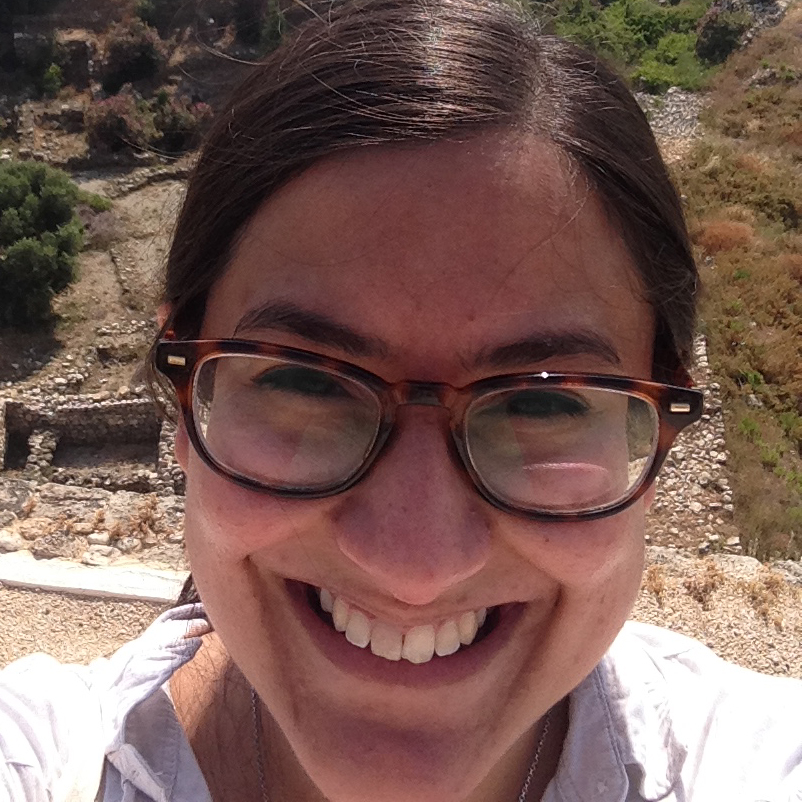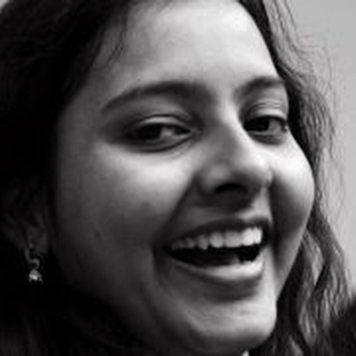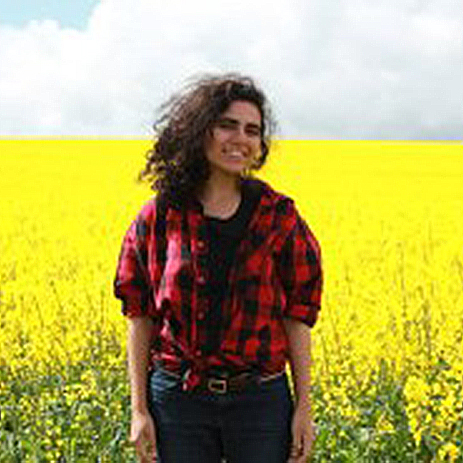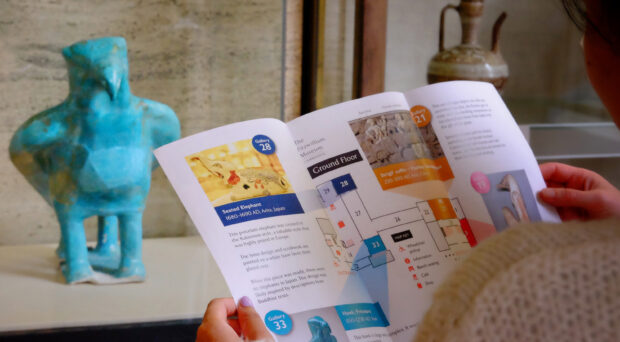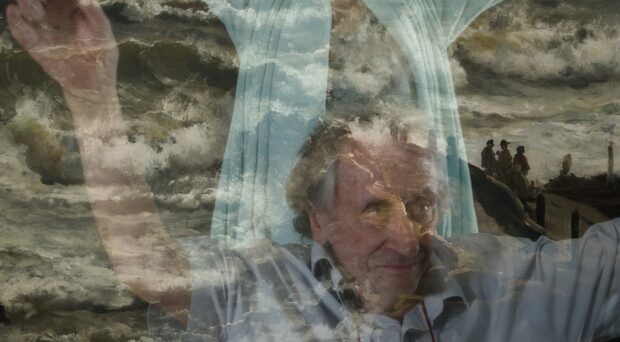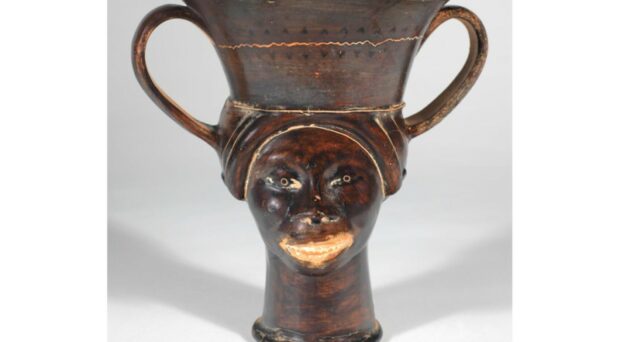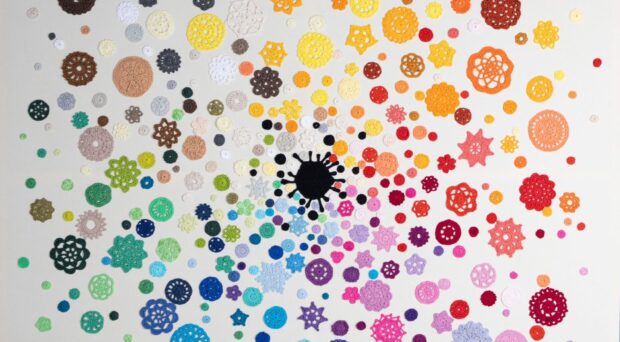It could be said that take-hold, our digital encounter at the Museum of Archaeology and Anthropology, is a bit like an onion.
It doesn’t look like it, with the enticingly glowing surface of its vase, and the whispering, conflicting voices in your head. But peel back the layer of the artwork, and you’ll find the creative work of artist collective non zero one and their collaborator Sheila Ghelani, as explored on this blog. And below that, academic research in the museum’s galleries carried out by Danika Parikh, Akshyeta Suryanarayan and Ananya Mishra; and Malavika Anderson, University of Cambridge Museums Cultural Programmer, who originally commissioned the project.
The project was developed in dialogue with the themes of MAA’s Another India exhibition, which explored the heritage of India’s minority Adivasi (‘original inhabitants’) or Indigenous communities through the Museum’s collections and newly commissioned artworks from Indigenous and Adivasi artists from across India. With take-hold now on its second run in MAA, we caught up with Danika, Akshyeta and Ananya to find out more about the research that underpins the experience.
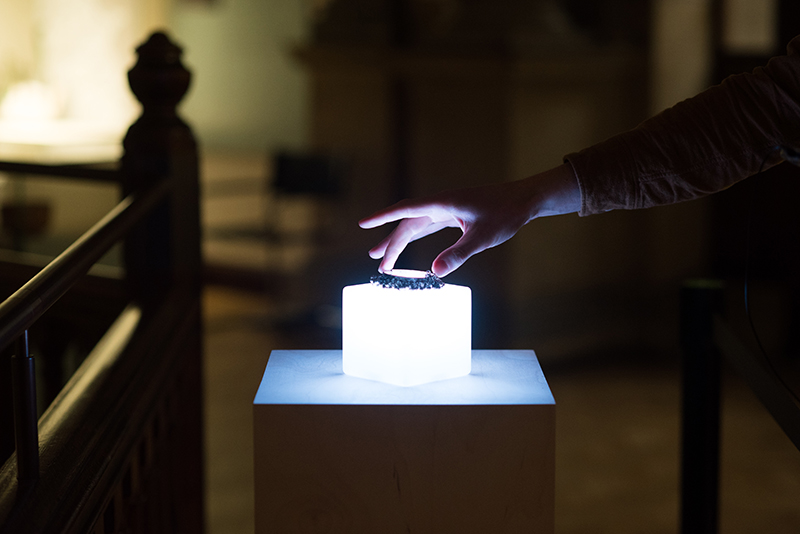
Tell us a bit about yourselves and your research.
Danika and Akshyeta are archaeologists from New Delhi, and Ananya is from Sambalpur, and studies indigenous literatures.
Danika: I’m finishing a PhD on the Indus Civilisation (3200 – 1600 BC) of India and Pakistan, and I work on material culture from rural Indus settlements. My research interests include the relationships between people and objects, and between urban and rural centres, as well as how material culture is made and used, what it means to people, what it communicates. I am also interested in the impact of colonialism on Indian archaeological theory and the heritage sector.
Akshyeta: My PhD also focuses on the Indus Civilisation. My research is examining what foods were being cooked in ancient vessels used by Indus populations by combining techniques used in chemistry, biology and archaeology. I am also, however, interested in issues concerning museum practice and the representation of archaeological and contemporary communities within museums.
Ananya: My research focuses on comparing Adivasi, Native American and Australian Aboriginal literatures to study indigenous political identity and literary solidarity. Before my research became more comparative in scope, I worked on Adivasi song cultures from displacement movements of Odisha to study how literatures, especially songs and the social media helped in political intervention and building networks between diverse Adivasi and non-Adivasi communities.
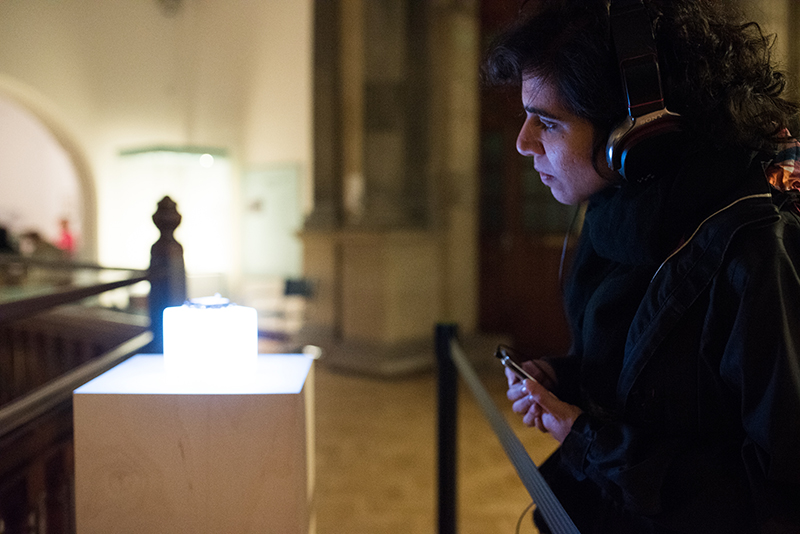
How did you become involved in the project?
We all became involved in the project when Malavika brought us onboard in the very early stages of planning. We first met in February 2017 to discuss ideas and brainstorm what the project could be. It was an exciting opportunity presented to us to come up with ideas and ways we can help reimagine the museum.
What about it appealed to you?
Akshyeta: The thought of contributing to the creation of an exhibit that would critique and question museums and museum practice in Cambridge was extremely exciting. Some museums have begun to engage in some healthy self-criticism now. But many famous museums and institutions that are linked with the history and development of archaeology and anthropology as disciplines, which in themselves were tied into colonial and imperial projects, have been reticent to acknowledge the problematic history of their collections. I was eager to be a part of helping Cambridge take steps towards increased reflexivity.
Ananya: I was thinking about the problematic representation of Adivasis in museum spaces in Odisha, and around the same time Malavika initiated talks for a project that would pose important questions within museums in Cambridge. As a group we started talking about a project that would help us question the idea of ‘museumising’ within museums and make visible the histories behind the objects that have actually been ‘taken’ from communities. There is a history of violence that has led to the creation of perfectly curated museum spaces in the UK, and I wanted to be part of a critical project that asked these questions in Cambridge museums.
Danika: Everything! The opportunity to work again with Malavika, whom I know from my previous work with the museum, and the chance to work with other South Asians at the university to explore the collections in a way we don’t usually see. I was inspired by the work of Sara Wajid’s Museum Detox, and movements like Decolonise the Museum, and leapt at the chance to work on a project with similar themes. I think there is a lot of scope for projects that think critically about museums and collections. As Akshyeta said, other museums are increasingly grappling with their colonial histories to varying degrees – for example, the British Museum recently added a section on its founder’s links with slavery to its website – and I hope this opens people’s eyes to the problematic foundations of these institutions.
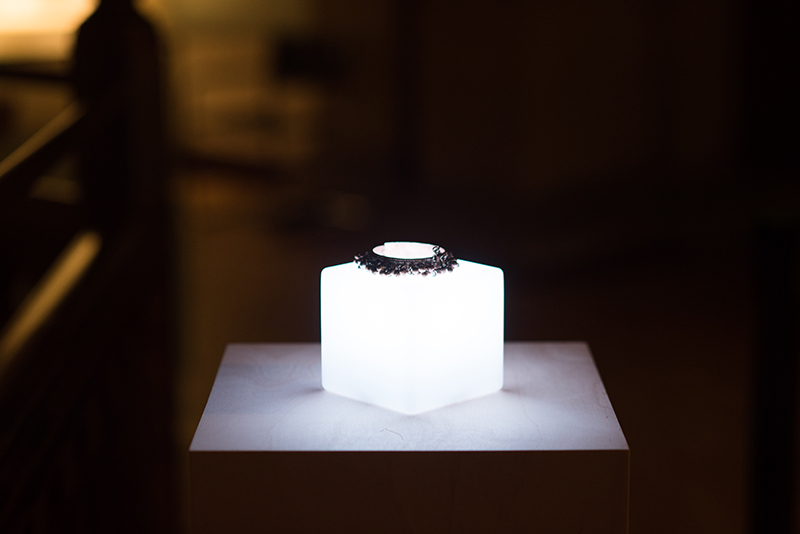
What did the work involve?
All three of us made multiple trips to the MAA to explore the displays, and to note the language of the labels, choice of objects, and the narratives presented. We were given a tour of the Another India exhibition by curator Mark Elliott, which helped us understand the museum’s collections a little better. We particularly focused on South Asian displays, including those from Bhutan, Nepal, Pakistan, and India. Following this, we met on several occasions to discuss our individual understanding of the objects in MAA and brainstormed to discuss what form would the project eventually take. A few of us had the idea of a ‘Decolonising the museum’ tour to offer an alternative reading of objects that were not mentioned in the labels.
Akshyeta, Malavika and Danika also attended an Uncomfortable Art Tour at the National Gallery in London that explored the histories of slavery, racism and colonialism behind some of the art. We saw portraits of people who had been prominent museum donors, but whose wealth came from plantations and the labour of enslaved people. A theme which really resonated with us was object biographies or the stories of objects, and the question of how something comes to be in a museum: it may be donated, acquired because of their artistic merit, through purchases from public funding, or it may be a portrait commissioned or displayed to flatter a patron. With anthropological and archaeological collections, the original owners are often nameless in records and the nature of how things are ‘collected’ is very obscured.
Were there any surprises along the way?
Danika: I think I was struck most by the language of the labels, which concealed a number of realities. One of the older labels referred to an object as being collected during the Younghusband Expedition to Tibet. This makes it sound relatively benign, but another name it’s known by is the British invasion of Tibet. It was a military invasion during which thousands are believed to have been killed- a medal was issued for service during the campaign. Can an object acquired under those circumstances be considered to have been ‘collected’ peacefully?
Akshyeta: I had been to the MAA many times before and had laughingly dismissed the presentation of many of the objects in the permanent galleries there as ‘old-school’. But when I focused on some of the displays on South Asia as part of the research required for this project, and I mean, really looked at the objects chosen, the labels that described them, and the general themes running across some galleries, I truly realised how problematic some of the representations of contemporary South Asian communities were.
Ananya: Yes, especially the erasure of the contexts from which the objects were gathered and a continued strain of colonial understandings of Indian communities. For example, I felt the permanent exhibits did not sufficiently problematise caste and tribe. The temple objects curated on the shelf appeared removed from their deeply casteist associations, of purity, pollution and exclusion that they carry. And just beside this, there was a section focusing on Adivasi bodies and faces through photographs. More troubling was the fact that when I tried imagining what it would be like to view objects removed from their colonial history, the communities represented appeared dead and a relic of the past, when these are thriving communities with an evolving body of art and literatures.
Danika: That’s so true. I think when we see objects from other cultures in sterile environments like glass cases, we picture the people who owned them frozen in time too, but people and communities continually change. A Bhutan display label talked about the national sport of archery and mentioned that women aren’t allowed to participate and can ‘pollute’ bows by touching them, but female archers have represented Bhutan at the last five Olympics. We also noticed some of them still used out-of-date terminology like ‘Mongoloid’. Both the objects and labels are in cases, virtually unchanged over time, but societies and cultures have changed a lot.
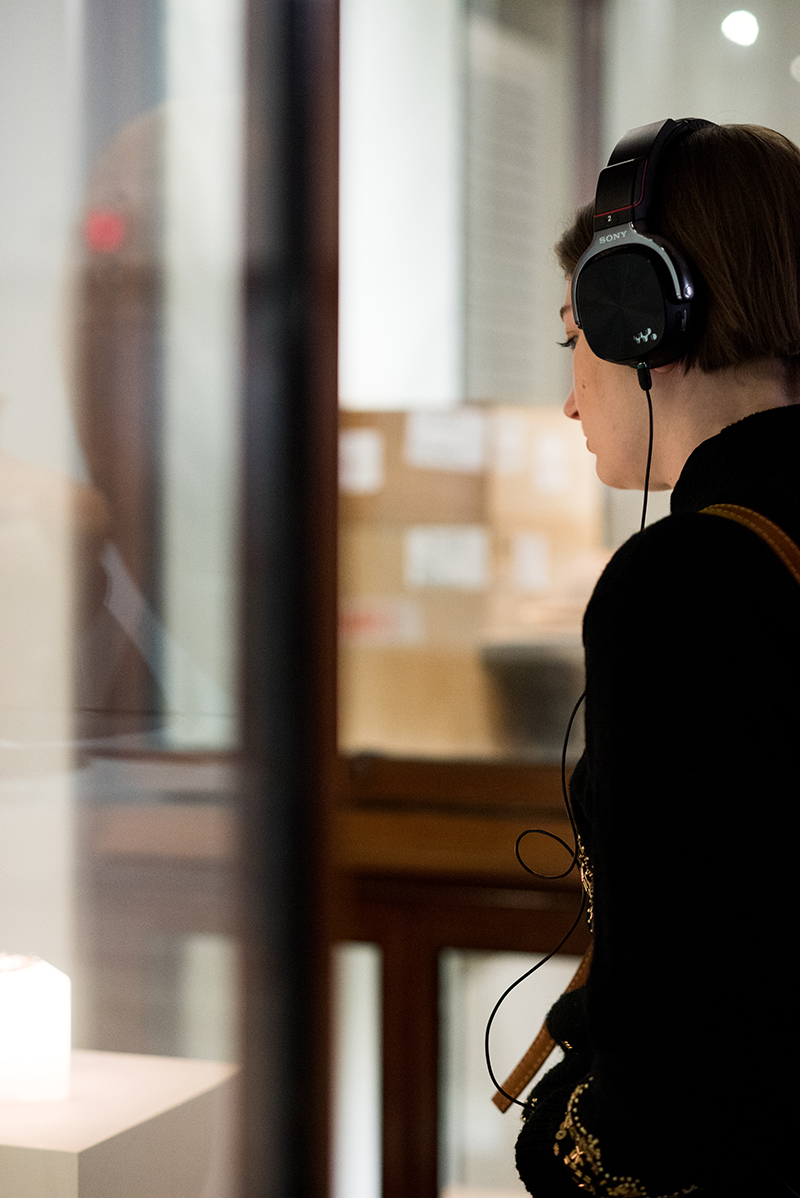
How did your research backgrounds shape your approach to the project?
All three of us feel our work influenced our approach to the project; we used our experiences and research to identify themes we felt were important that deserved greater focus, and then again when examining museum histories and displays critically.
Ananya: My research helped me approach this project and read MAA as an exhibit. MAA has influenced my understanding on continued colonialism within South Asia. It has made me realise the deeply problematic nature of state museums in India that is taking forward similar colonial notions of ‘high and low cultures’ and ‘primitivism’ in the way they curate indigenous bodies and cultures. Akshyeta told me about her visit to the Anthropological Museum in Port Blair and being horrified by dehumanising descriptions and depictions of Adivasi groups on the Andaman Islands, a feeling I shared when I visited the state Tribal Museum in Bhubaneswar which curates the lives of living Adivasi communities who stay in both urban and non-urban places not far from the state capital.
Akshyeta: I previously studied a famous university museum in the U.S. and the way it presented ancient (‘Egypt’ and ‘Greece’) and contemporary (‘Africa’) cultures. In all three galleries, which were created at different times in the history of the museum (1920’s to 1990’s), the curators’ idea of the role of the museum in society underpinned the presentation of objects and the representation of the cultures being showcased. My interest in museum anthropology and this project stemmed from this and made me aware of how museums propagate narratives of ‘civilised’ (or ‘uncivilised’) legacies usually from a very narrow perspective with the presentation and interpretation of objects that are far removed from their original context.
Danika: I work a lot on what we call material culture theory, through which we now understand that objects are more than just ‘things’; they have cultural, historical, and personal significance. There’s this classic response ‘it’s just stuff’. But imagine losing your grandmother’s earrings, or your family photos, or something you made yourself by hand. Objects can be emotional, powerful, full of memories. I went into it with this idea, knowing that we can become so attached to the things we own, that losing them by accident or being forced to give them up can be very distressing for people. Almost all the objects in a museum used to belong to an individual or a group of people. Once you see it that way, you’re struck by the scale of loss.
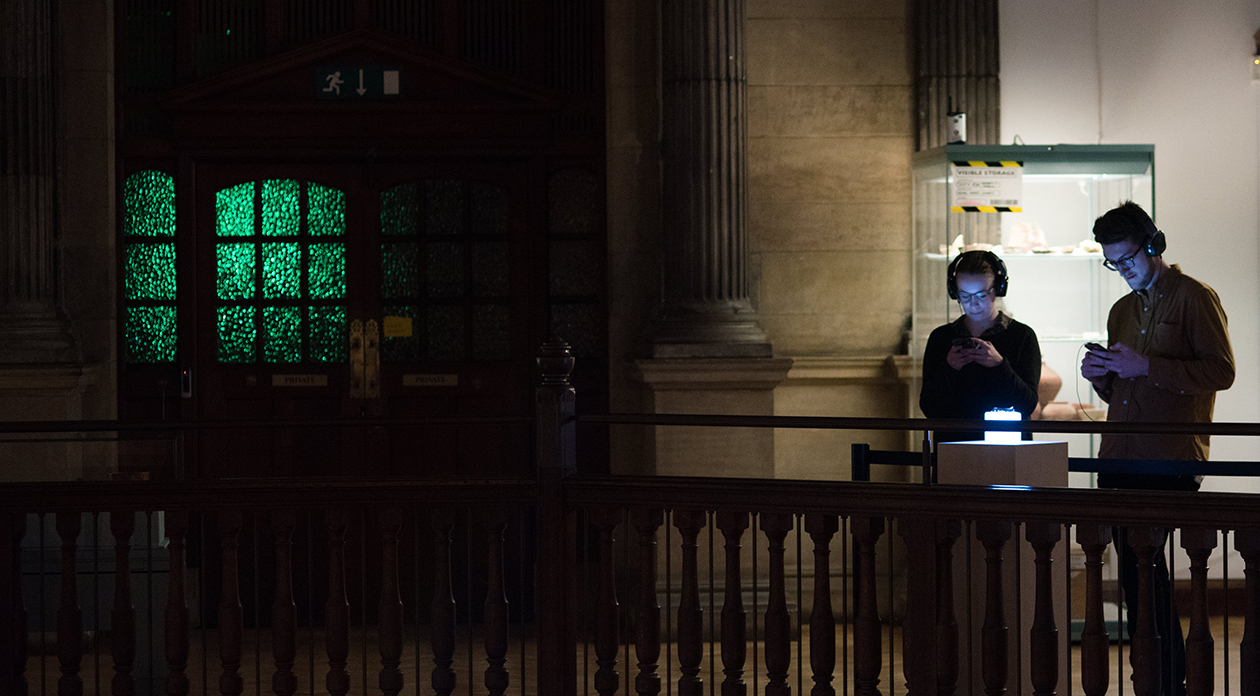
What are your hopes for the legacy of the India Unboxed season?
We hope projects initiated as part of India Unboxed begin a conversation within museums in Cambridge, and link them to wider movements in Cambridge, such as Decolonise the Curriculum, in the UK and other former and current colonial powers. We need to talk about how we perceive empire, how it is taught in schools in the UK today, the colonial repercussions on South Asia and other erstwhile colonies till the present day, and the ways in which UK-India relations can be imagined in contemporary times. Even though we are a team of South Asian women who worked on this particular project, which we hoped would address decolonisation within museums, the responsibility is not on us alone but very much on the public, on British museum-goers to consider difficult questions, address their colonial pasts and work together towards ways in which we can understand our shared histories with an academic rigour and an equal sense of empathy.
We felt an important step in this direction was Mark Elliott’s round table discussion on Adivasi heritage in museums following the Another India exhibition. He invited Amareswar Galla, Director of the International Institute for the Inclusive Museum, Ruby Hembrom, Director of Adivaani, and others to offer feedback and talk about common concerns arising from the museum exhibition. We hope that in the future, more projects are developed with the specific vision of tackling complex or difficult questions about the history of museums in the UK, and which work towards incorporating diverse voices as part of their goal. Museums are important and can play a great role in education and showing people the value and complexity of other cultures, and the similarities of the human experience, but it has to come from a place of respect and a more equal and ethical footing.
take-hold is available in MAA until Sunday 17 June 2018. The free audio experience lasts about 30 minutes: just ask at the Museum’s information desk.

